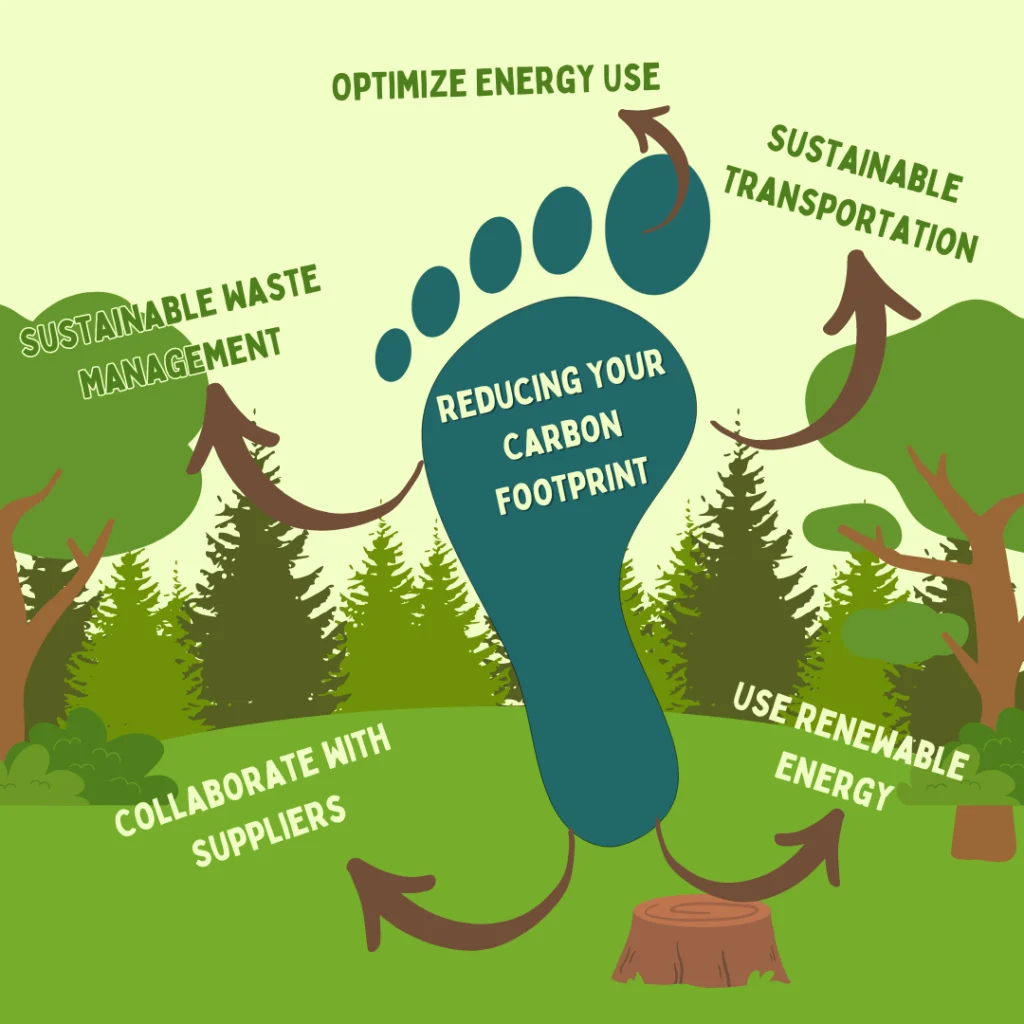What Are the Four Main Carbon Footprint Categories?
Understanding what are the four main carbon footprint categories is crucial for reducing greenhouse gas emissions and achieving sustainability. Every product, service, and activity has an associated carbon footprint, which measures the total amount of greenhouse gases (GHGs) released into the atmosphere. These emissions are categorized into four key areas, each playing a significant role in shaping global environmental policies and practices.
1. Direct Emissions (Scope 1)
The first category, direct emissions, refers to all GHG emissions that come directly from sources controlled by an individual, company, or entity. These emissions occur on-site and are typically associated with activities like fuel combustion for heating, operating machinery, or company-owned vehicles.
For example, a manufacturing company that burns fossil fuels on-site or operates its fleet of delivery trucks contributes to Scope 1 emissions. Reducing these emissions often involves transitioning to renewable energy sources and improving operational efficiency.
2. Indirect Emissions from Energy (Scope 2)
The second category is indirect emissions, which arise from the consumption of purchased energy. These are known as Scope 2 emissions and include emissions generated from electricity, heating, and cooling. While the emissions occur at the power plant, they are linked to the energy consumption of the end-user, such as businesses or homes.
To lower Scope 2 emissions, organizations and households can invest in energy-efficient appliances, switch to renewable energy sources like solar or wind, and optimize energy use.
3. Other Indirect Emissions (Scope 3)
The third category, Scope 3 emissions, includes all other indirect emissions that occur in a product or service’s supply chain. This is the largest and most complex category, covering everything from the production and transportation of raw materials to employee commuting and waste disposal.
For example, the emissions generated by a supplier producing components for a smartphone or the CO₂ emissions from shipping goods to customers fall under Scope 3. These emissions are often difficult to control, but companies can work with suppliers to minimize their environmental impact through more sustainable sourcing and logistics.
4. Biogenic Emissions
The fourth category, often overlooked but equally important, is biogenic emissions. These are emissions of carbon dioxide (CO₂) from the natural carbon cycle, such as the combustion or decay of biomass like wood, plants, or organic waste. While these emissions are part of natural processes, excessive use of biomass for energy can still contribute to climate change if not managed sustainably.
For instance, burning wood for energy releases stored CO₂ back into the atmosphere. However, if the wood is sourced from sustainably managed forests, the carbon released can be recaptured by new trees as they grow.
How Do These Categories Affect Your Carbon Footprint?
When considering what are the four main carbon footprint categories, it’s clear that each category plays a unique role in shaping our overall carbon emissions. If you want to dive deeper into the importance of reducing carbon emissions and understanding how they affect our planet, make sure to Discover What the Carbon Footprint Is and Why It’s Crucial to Reduce It. By addressing all four categories, from direct emissions to the broader supply chain, both individuals and businesses can make impactful changes.
By focusing on energy efficiency, sustainable sourcing, and responsible waste management, both individuals and businesses can significantly reduce their carbon footprints and contribute to global efforts in combating climate change.
Strategies for Reducing Your Carbon Footprint

1. Optimize Energy Use
Invest in energy-efficient lighting, appliances, and machinery to cut down on Scope 2 emissions.
2. Sustainable Transportation
Choose eco-friendly transportation options like electric vehicles or public transport to minimize Scope 1 emissions.
3. Collaborate with Suppliers
Work with suppliers to adopt more sustainable practices and reduce Scope 3 emissions throughout your supply chain.
4. Use Renewable Energy
Transition to renewable energy sources like wind or solar power to mitigate both Scope 1 and Scope 2 emissions.
5. Sustainable Waste Management
Implement recycling programs and compost organic waste to manage biogenic emissions sustainably.
Frequently Asked Questions (FAQs)
What are the four main carbon footprint categories?
The four main carbon footprint categories are: direct emissions (Scope 1), indirect emissions from energy (Scope 2), other indirect emissions (Scope 3), and biogenic emissions. Each category contributes to a product or organization’s overall carbon footprint and offers different opportunities for emissions reduction.
Why is it important to reduce all four categories of carbon footprint?
Reducing all four categories is vital for mitigating climate change. Each category affects different parts of the economy and environment, and addressing them holistically can lead to a significant decrease in global carbon emissions.
How can businesses reduce Scope 3 emissions?
Businesses can reduce Scope 3 emissions by optimizing their supply chain, sourcing materials sustainably, and working with logistics providers to minimize emissions from transportation and waste management.
Can individuals impact Scope 1 and Scope 2 emissions?
Yes, individuals can directly influence Scope 1 emissions by reducing personal vehicle use and Scope 2 emissions by choosing renewable energy for their homes and adopting energy-efficient practices.
What role do biogenic emissions play in the carbon footprint?
Biogenic emissions are part of the natural carbon cycle, but when biomass is used unsustainably, it can contribute to global warming. Sustainable management of resources like forests can help balance biogenic emissions.
Take Control of Your Carbon Footprint Today
Understanding the different categories of carbon footprints is the first step towards reducing your environmental impact. But how do you know where to start? Take action today by using our Carbon Footprint Calculator to measure your personal or organizational carbon emissions. It’s a simple, effective tool that gives you insights into your carbon output and helps you make informed decisions to lower your footprint and contribute to a more sustainable future. 🌍✨

